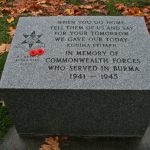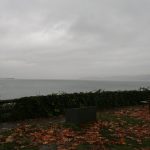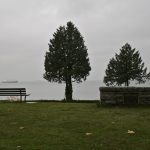November the 11th is Remembrance day in Canada and many Commonwealth countries around the world, commemorating the signing of the armistice that ended the First World War. All over Canada, ceremonies mark the occasion and tributes paid to those soldiers who lost their lives in that, and other wars fought since. The Premier of British Columbia, Christy Clark, was in India recently, and visited the Delhi War Cemetery on Remembrance Day, laying a wreath to honour the dead, including 17 Canadians who are buried there.
Armistice day was observed in India before Independence in 1947. As my father recalls, a call to silence at 11 am on the 11th of November, was announced by a the sound of a single shot being fired at commemorative ceremonies, which were held all over the country, and not limited to military cantonments. There were millions of Indian soldiers, many of them Sikhs, who fought in the First and Second World Wars. One decorated Canadian soldier’s story came to light relatively recently, thanks to the efforts of a Sikh historian.
Private Buckam Singh served with the 20th Canadian Infantry Battalion in the battlefields of Flanders during 1916. He’s a genuine Canadian hero because not only did he serve, but he was wounded twice in two separate battles says Singh Brar. One of the interesting discoveries included the fact that after being shot Private Buckam Singh received treatment at a hospital run by one of Canada’s most famous soldier poets the Doctor Lt. Colonel John McCrae.
That is the same Doctor Lt. Colonel John McCrae whose poem “In Flanders Fields” inspired the red poppies we wear in remembrance of those who lost their lives in battle. A touching connection between those who made remarkable contributions to this country. Canada’s last surviving veteran of WW I died last year at the age of 109, and the number of WW II veterans is rapidly declining too. But there are many more, from later wars, to whom this day of remembrance is dedicated.
In Vancouver’s Stanley Park, a small stone marker, engraved with the Kohima Epitaph, overlooks English Bay. (A different battle for freedom played out here in 1914, when a ship, the Komagata Maru, bearing Indian immigrants, many former soldiers who had fought in WWI among them, was held in this harbour). The well known, poignant Kohima Epitaph comes from the memorial at the cemetery maintained by the Commonwealth War Graves Commission in Kohima, India, marking the loss of British, Indian and other Commonwealth forces in the bitter Siege of Kohima, which raged from April to June, 1944.
That’s where we choose to leave the red poppies we have been wearing for the last two weeks.




Thanks for writing this , so poignantly and evocatively about a brave pioneer and soldier . Lest we forget that so many lives were lost so tragically , they were young lads on the brink of manhood on both sides . I wonder what his thoughts were as he lay alone in that hospital bed thousands of miles and oceans away form his family. In India we do not have a war memorial for our brave soldiers even today and the Amar Jawan Jyoti cannot count as one . I am reminded of the song , ” Daylight Again …..Do we find the cost of freedom buried in the ground ” by CSN http://www.youtube.com/watch?v=l1eLK2OlF6w
Hi Jyoti, I wonder too, about the thoughts of those young men so far away from anything familiar, and often in such wretched circumstances. Was reading this account of Indian POW’s recently
http://www.awm.gov.au/journal/j37/indians.asp
So many stories and so many more lost.